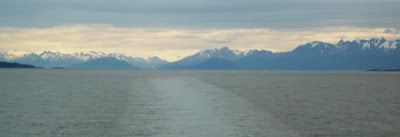Antarctica, Day Three: Carcass Characters

From home base in Ohio, Kenn and Kim write: Our first landing of the trip was on the morning of January 9, on Saunders Island in the Falklands (see previous post on "Punks and Saints" posted on Feb. 18). That afternoon we made a second landing, on nearby Carcass Island, also situated in the northwestern part of the Falklands archipelago. Carcass Island isn’t as grim a spot as its name might imply; it was named for a British ship, the HMS Carcass, that visited the region in the 1770s. Today the island is mostly occupied by sheep farming, but it still has a lot of birdlife. Undoubtedly there’s the occasional real carcass around (sheep fall victim to a variety of mishaps, after all, and various sea creatures wash up dead on the beaches), so there’s an open niche for scavengers. A common scavenger here was the Striated Caracara. This bird also occurs in southern South America, but it’s easier to find on the Falklands than anywhere else. The adult Striated Caracara always seems...








